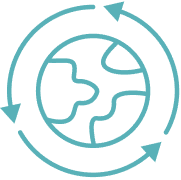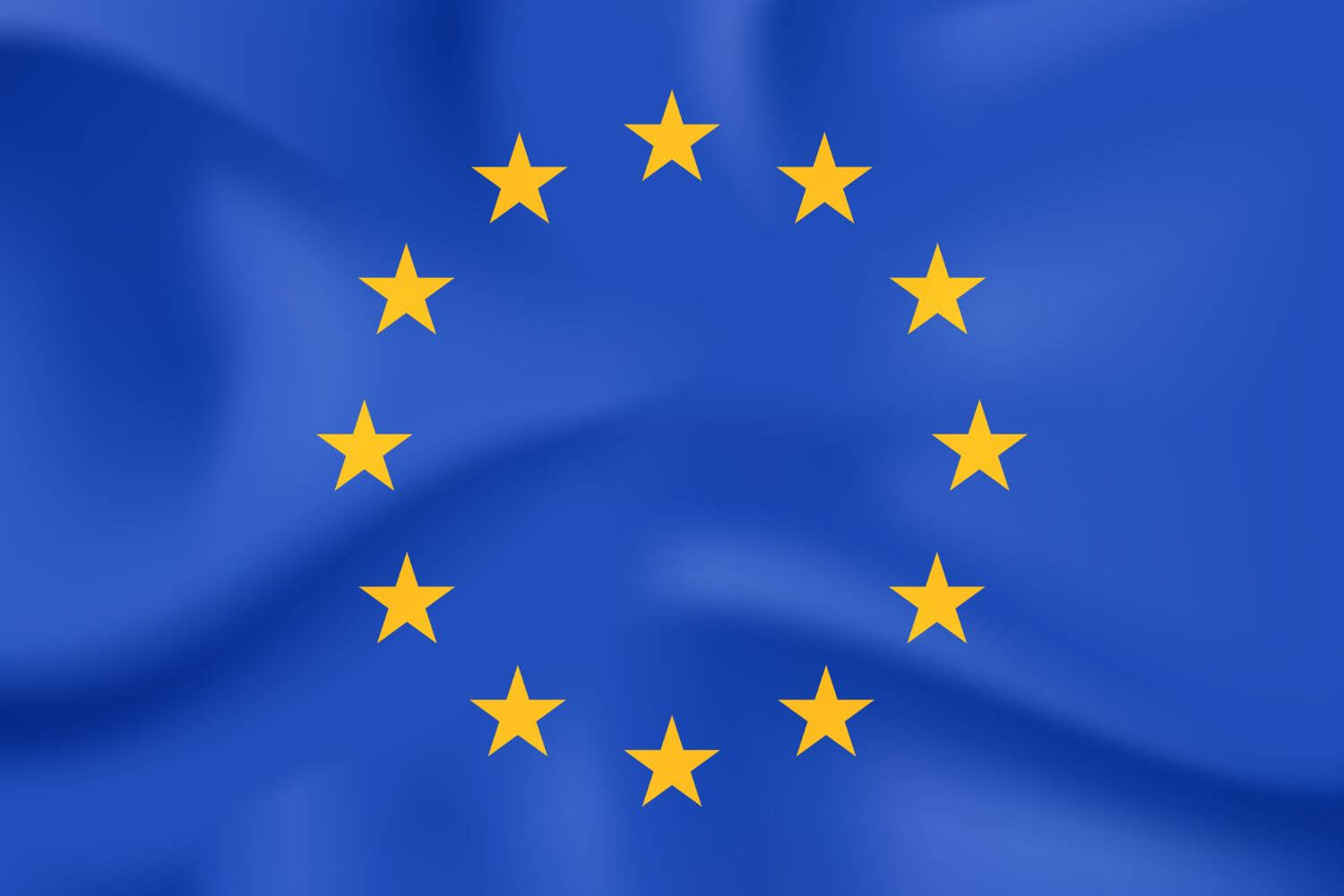In circulation
On 2 December 2015, the European Commission published its first action plan for a circular economy (First CEAP).
What do we actually mean by a circular economy?
What do we actually mean by a circular economy“The concept of the circular economy has been gaining ground in the academic and then the economic world over the last few years. In the so-called linear economy, which characterizes most of today’s economic processes, technical and biological components are taken from nature, transformed and then discarded after use, mixed together and lost forever, and even our natural resources are constantly destroyed. On the contrary, in a circular economy, the metabolic processes flow in a planned, closed loop, waste is almost 100% recycled and biological and technical components are not mixed, but are returned to the biological and economic cycles without any loss of quality.” (Source: first CEAP)
The circular economy, as we can see, originates from the processes of nature: in nature there is no waste, no rubbish, everything is recycled. Continuous transformation and renewal are ensured through circulation. For example, we can talk about the water circulation, or even the circulation (biogeochemical cycles) of certain elements (carbon, nitrogen, sulphur), or even the nutrient cycling. This circulation is continuous, and nothing is going to waste.
The circular economy could be created on the model of this circulation: a given product is manufactured from raw materials, sold, we, the consumers, use the product, which is processed at the end of its life cycle, and the different fractions of the material become secondary raw materials that can be used by the same or another industry in its production processes. This is what the theory of the circular economy is about. Of course, the circular economy itself affects not only electronic products, but the whole economy, hence many other products (e.g. furniture, clothes, etc.).
One of the central objectives of the First CEAP was better product design. According to the Commission, “The circular economy starts at the very beginning of a product’s life cycle, i.e. with product design – smart product design helps to save raw materials, avoid inefficient waste management and offers new business opportunities”. (Source: first CEAP)
Accordingly, under the auspices of the circular economy, the so-called eco-design legislation on requirements for environmentally friendly design of energy-related products was amended in the period 2016-19: the Ecodesign Directive and the related ecodesign regulations for certain products. This legislation has actually existed in the EU since 2005, but earlier, the legislator set rules for manufacturers to design products that reduce the energy consumption of the products during use. In fact, according to the legislator, 80% of that depends on product design. In the 2010s, most large household appliances (e.g. refrigerators, washing machines, dishwashers, dryers, air conditioners) and even televisions were covered by ecodesign legislation, in which the legislator required manufacturers to comply with the functions and features that their products must have in order to use less energy during their use.
However, in the framework of the circular economy, manufacturers must also consider further aspects when designing products: in line with the Ecodesign Working Plan 2016-19, the new product regulations entered into force in 2021 put particular emphasis on designing products
- to be durable;
- so that their repair is feasible; and
- so that at their end-of-life, ease of (dis)assembly ensures more efficient waste processing or, where appropriate, preparation for re-use.
The other major objective of the First CEAP was to review waste regulations. “The Circular Economy Package includes proposals aimed at amending EU waste legislation to improve waste management practices, encourage innovation in recycling and raw material use, and restrict the disposal of waste in landfill. The package of proposals offers a clear and durable solution for long-term investments aimed at prevention, reuse and recycling”. (Source: first CEAP)
So, after the former linear approach to the economy, the main emphasis is on “closing the loop”. Although the life-cycle approach, taking into account the full environmental impact of the whole life-cycle of a given product (i.e. its production, use and transformation into waste), has been an important focus in the past decade, this linear model will be “rounded off/cowered” in the future, with better product design facilitating the work of waste processing operators and a greater focus on better recovery of secondary raw materials derived from waste processing and their more active recycling into production processes.
However, under the aegis of the circular economy, not only better product design and more efficient waste management are objectives, but also the actual prolongation, extension of the use phase of products, with an important element of better reparability and, in particular, reusability of products…
Second Circular Economy Action Plan
On 11 December 2019, the Commission adopted the so-called European Green Deal (hereinafter referred to as the EU Green Deal), a package of proposals that sets out a vision for a fully carbon-neutral, resource-efficient and competitive economy by 2050. As a part of this, the new Circular Economy Action Plan (hereinafter referred to as the Second CEAP) appeared on 11 March 2021, which will support the implementation of the EU Green Deal with a number of concrete measures in the future.
Both documents emphasize the importance of a more efficient management of waste, including a higher recycling rate, and the Second CEAP proposes concrete measures in this respect. Among the plans of the Sustainable Product Initiative, published on 11 September 2020, electronic appliances, including consumer electronics, textiles and furniture are included as a special priority product group. The obligations apply in the first place to manufacturers, as this strategy also stresses that 80% of the environmental pollution caused by a product is decided during its production. However, these are now being further developed and tightened. The EU has set out the following objectives for future products:
- durability, reusability, upgradability, repairability
- indication of chemical composition, improvement of energy and resource efficiency,
- increasing the recycled content of products (while maintaining safety and performance),
- ensuring, at the end of life cycle, easier processability and a high recycling rate,
- reducing carbon dioxide and environmental footprints,
- limiting single use and premature malfunction,
- prohibiting the shredding (treatment as waste) of unsold durable products,
- supporting economic models such as “product as a service”, where the manufacturer maintains the property rights and lifetime responsibility of the product,
- developing digital product information (e.g. digital product passport),
- supporting products showing sustainable solutions.
We can see that this is much broader than recycling alone, but a complex approach will result in much more effective long-term solutions. In the case of electronics products, they are so serious about these changes that they have planned a dedicated Circular Electronics Initiative, which will focus specifically on the future of these products. This will deal specifically with mobile phones, tablets, chargers, printers. In the future, it will be important, inter alia, to ensure more efficient collection, the use of uniform chargers, and the upgradability of software.
Solving the problem of illegal waste exports to third countries will be of great importance in the future. The goal is to use “EU recycled” materials as a benchmark for future products.
All these measures serve to reduce the amount of electronic waste generated in the future. There is no doubt that this is the waste stream that is growing fastest.
In summary
The implementation of the circular economy objectives was first defined in the first Circular Economy Action Plan of 2015. The two main objectives set are to complete the ecodesign rules and to revise the waste rules. Amendments to the ecodesign legislation have already started: on 1 March 2021, in parallel with the new energy labelling rules, the specific product regulations, which already include the so-called resource efficiency requirements, entered into force.
The Second Circular Economy Action Plan 2020 made a proposal to set further circular targets. These will be embodied in detail in the ESPR (Ecodesign for Sustainable Product Regulation) which will be elaborated in the future on the basis of the Sustainable Product Policy objectives.Watch the short film of APPLiA Hungary of 2021 on the circular economy:








